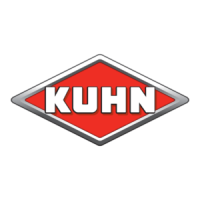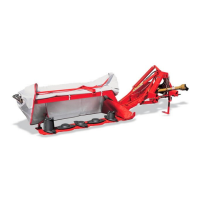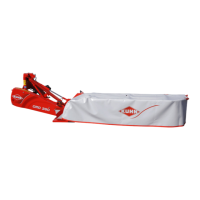How to fix uneven stubble with KUHN GMD16?
- JJulia Castro DDSAug 4, 2025
To fix uneven stubble with your KUHN Farm Equipment, start by checking and replacing any dull or broken knives. Ensure the knives are correctly installed, with the arrow on the upper face pointing in the disc's rotation direction. Verify sufficient disc speed by checking belt tension. Increase the PTO speed to 540/min if it's too low, and reduce the cutter bar pitch angle if it's too high.



